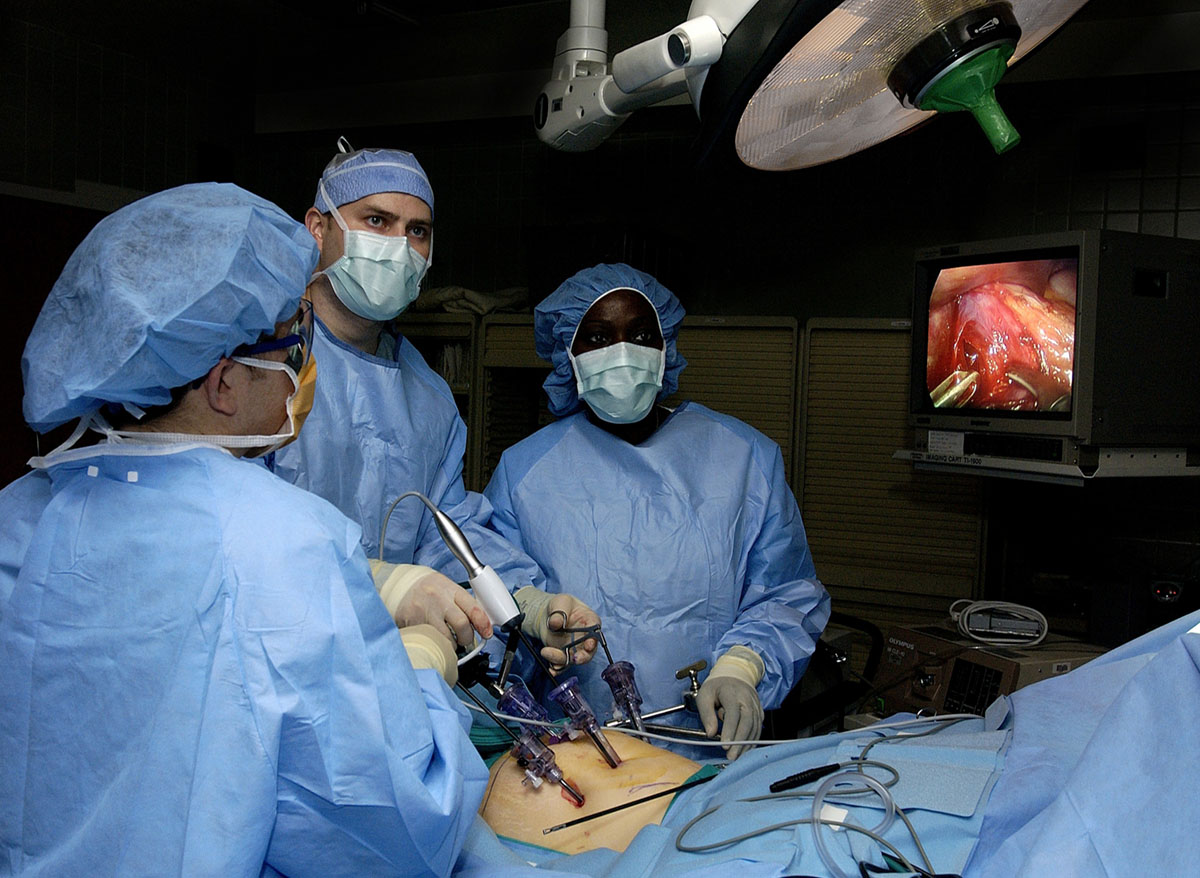Table of Contents
Abdominal adhesions can prove to be fatal if they not treated urgently. Treatment includes two methods. These are as follows.

Non-surgical Treatment
Acetaminophen (Paracetamol) or ibuprofen are usually used for this purpose.
In order to prevent the condition from developing into a full-blown bowel obstruction, patients are advised to restrict their diets only to sips of non-fizzy drinks for at least 24 hours. No solid food should be taken. In some cases food and drinks are totally prohibited for a particular period of time; this state is known as NPO (Nil per os). This regime may even help a complete bowel obstruction get better.
However, it might be required that you be admitted to the hospital so that the doctor can monitor your condition and progress. An IV drip may provide you with the required fluids and salts you need. A tube may also be inserted through your nose to help release gases and fluids from the bowel. After your condition improves, a liquid low-fiber diet will be prescribed, to help move food along the bowel easily.
Surgical Treatment
If the obstruction does not clear after the non-surgical treatment, surgery will have to be performed. The operation is called adhesiolysis and is currently the only treatment for abdominal adhesions. Laparoscopic or open surgery for removal of adhesions is known as adhesiolysis.
People suffering from complete bowel obstruction or strangulation often need emergency surgery. However, this procedure may cause further abdominal adhesions to develop, and proper consultation with a doctor is necessary before opting for this procedure.
Adhesiolysis may be carried out via "open surgery", in which a single large incision is made in the abdominal area. This method is highly invasive, causes prominent scarring, and has a longer healing period. The risk of complications is also high.
This is a minimally invasive procedure that involves inserting a laparoscope into the abdomen or pelvis (through minor incisions). The entire procedure is monitored on an external feed. This causes less scarring and recovery is comparatively quicker.
Apart from treating an obstruction, surgery may also be advised for treating abdominal or pelvic cramping and distention. However, it is not guaranteed that surgery will treat the pain, and it could, in fact, make it worse. Thus, it is vital that you discuss, in detail, the risks, benefits and alternatives of the surgery with your doctor before giving your consent.
Can Abdominal Adhesions Be Prevented?
This is why doctors recommend abdominal or pelvic surgery very cautiously. Despite this, the surgeon may still minimize the risk of causing adhesions by using a gentle technique and powder-free gloves. Dietary changes such as increased fluid intake and low-fiber intake may help resolve partial obstructions without surgery.
What Is The Prognosis?
Even though treatment is available, both non-surgical and surgical, abdominal adhesions can become a recurring problem. Since the cause and the treatment is ironically the same — surgery — 11-21 percent of patients who undergo adhesiolysis develop new adhesions, leading to intestinal obstructions.
See Also: Peritonitis: An Infection Of Abdominal Layer
Currently, scientists are trying to formulate special fluids and films to be used during abdominal surgeries, with the hope that they may help reduce the incidence of adhesions. However, further testing and research is required before these may be put to practical use by doctors.
- By Hic et nunc (Own work) [Public domain], via Wikimedia Commons: upload.wikimedia.org/wikipedia/commons/0/02/Adhesions.jpg
- By Samuel Bendet, US Air Force [Public domain], via Wikimedia Commons: upload.wikimedia.org/wikipedia/commons/c/c3/Laparoscopic_stomach_surgery.jpg
- By Hic et nunc (Own work) [Public domain], via Wikimedia Commons: upload.wikimedia.org/wikipedia/commons/0/02/Adhesions.jpg
- By Samuel Bendet, US Air Force [Public domain], via Wikimedia Commons: upload.wikimedia.org/wikipedia/commons/c/c3/Laparoscopic_stomach_surgery.jpg

